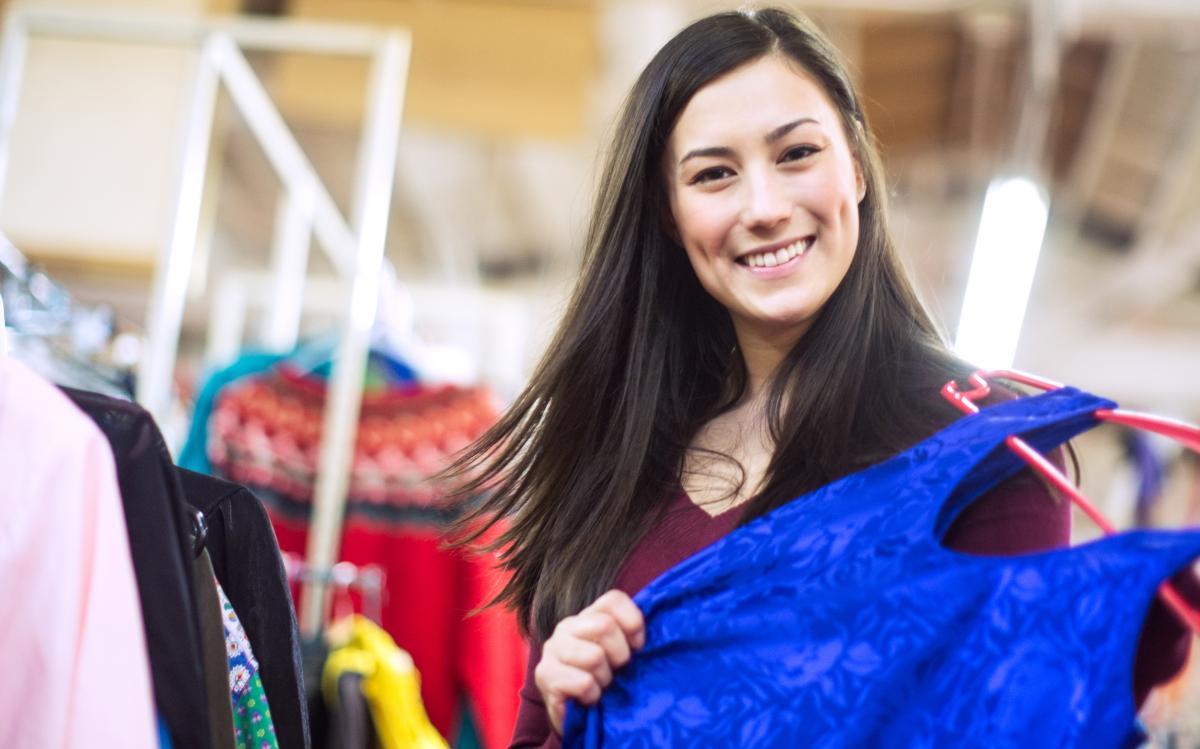What is the circular economy, anyway?

By Natalie Betts
In the Zero Waste world, we often talk about used items that are about to be tossed into a bin. Making sure that as many of these items as possible go into a bin other than a trash can, so they can be recycled or composted instead, is critical to Zero Waste.
But what can we do to keep fewer items from being tossed out? What if everything around us was designed to be adapted, repaired, or reused? That’s the vision of the circular economy—an economic system where products are kept circulating in productive use at their highest value for as long as possible. It’s a system where products are designed to be repurposed at the end of their first useful life.
A transition to the circular economy could make a major positive impact on our economic prosperity—one study estimated that creating a circular economy in Europe would add €0.9 trillion (approximately $1.04 trillion) to its GDP. It also matters for the environment. If fewer items have to be manufactured, then the pollution and carbon emissions caused by that manufacturing are avoided altogether.
Take clothing, for example: Clothing in the landfill adds up over time, yet it’s not the biggest contributor to waste by weight. The problem lies in the manufacturing of new clothing; it is hugely impactful to the environment—it takes 2,700 liters of water to make one cotton shirt. That’s enough water for one person to drink for 2.5 years! The greenhouse gases generated by one year of polyester production is equivalent to the annual emissions of 185 coal plants.
Buying a used shirt not only keeps something out of the landfill, it also means that one less new shirt needs to be manufactured.
So how can you help? The circular economy is such a big idea, and so much can seem out of our hands. But every person can make choices that will have a real impact.
In fact, you probably already do lot of circular activities without thinking about it, whether it’s reusing a water bottle or repurposing today’s butter tub to hold tomorrow’s leftovers. Here are some more tips for making Austin more circular:
- Think: Can it be fixed? It’s so tempting to throw away or recycle something when it breaks and just get a new one, but by fixing it yourself, you save all the emissions that it would have taken to manufacture, transport, and sell its replacement. That’s huge! The library offers repair information, or you can attend one of ARR’s Fix-It Clinics.
- Opt for reusables: Metal straws, rechargeable batteries, reusable razors, cloth napkins—there are many opportunities to swap out a disposable item for one that can be used again and again.
- Look for durability: Before you make a purchase, ask yourself how long that item will last. The longer you can keep something and the more uses you can get out of it, the better.
- Shop thrift: There are so many great second-hand stores in Austin. ARR helps maintain a list of locally-owned ones in our Shop Zero Waste directory at austintexas.gov/shopzero. You can discover unique items and save some cash at the same time.
- Borrow or rent: If you only need something a few times a year or on special occasions, see if you can borrow it from a neighbor or rent it from a local business instead of having it gather dust in a closet most of the year.
- Innovate: Do you have an entrepreneurial spirit? Then Austin needs your help to repurpose and reuse some of the valuable materials that are currently being discarded by other local businesses. The [Re]Verse Pitch Competition is about to kick off its fourth year and everyone is welcome to compete to create the best business idea that repurposes bike tires, wine skins, plastic sheets, and other interesting materials that need reuse solutions. Join us on February 26 to get started.
Still confused about the circular economy? This video from the Ellen MacArthur Foundation can give you more insight.

